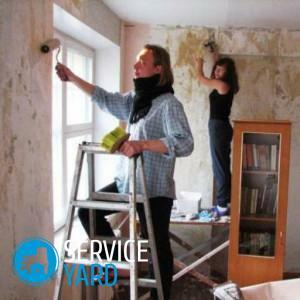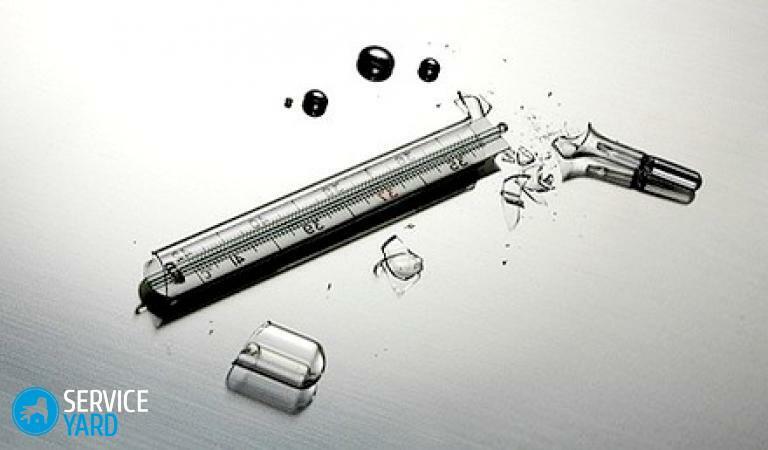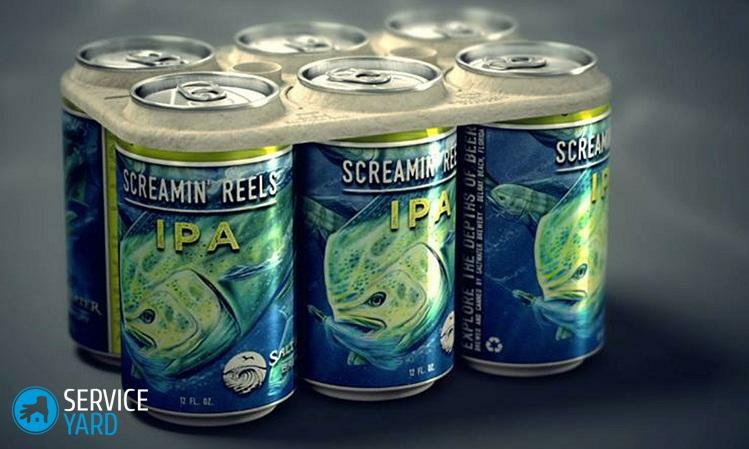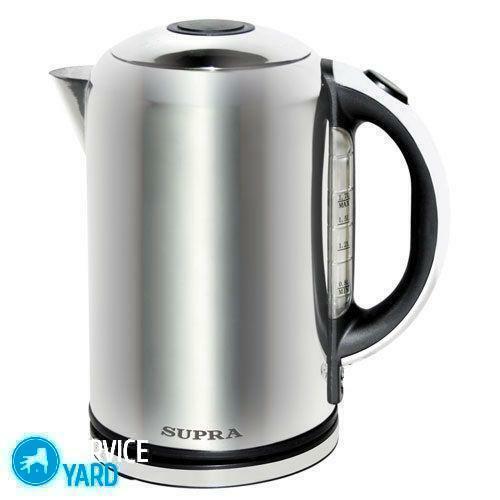
- Is mold dangerous?
- Kinds of mold
- Reasons for the appearance of
- What materials does the fungus like?
- The most vulnerable premises
- How to remove the fungus on the walls in the apartment?
- Than to deduce a fungus from concrete and a brick?
- Industrial facilities
- We process walls
Every person wants to have an atmosphere of calm, familiar comfort, warmth and kindness in his house. And for this purpose, a lot of effort is being made to finish the rooms, to choose furniture and to take care of everything that has been acquired - long or fast, it does not matter. Mold is an extremely unpleasant phenomenon, which even a very tidy mistress can face. It seems to be a new apartment, comfortable, comfortable - and suddenly these terrible black spots. Mold on the wall in the apartment - what to do? This will be discussed in the article.
to the contents ↑Is mold dangerous?
The ugly black spots that spoil your wall or ceiling are not at all safe, so you need to get rid of them as soon as possible. Disgusting appearance - it's not so bad. These spots are dangerous for the inhabitants of the apartment.
Mold is a fungus. It actively multiplies and produces enzymes. Those, in turn, react with other substances and form compounds that are not at all useful to the human body.
These enzymes, getting into the body, affect the metabolism and can cause a number of diseases:
- fungal lesions of the skin and mucous membranes( fungi):
- allergic reactions;
- poisoning;
- asthmatic manifestations;
- stomatitis;
- conjunctivitis.
Important! There are suggestions that the mold provokes the development of cancer. That's why it's so important to have an idea of how to get the mold off the walls in the apartment if it suddenly appeared.
to content ↑Kinds of mold
Mold is a collective name. These are different kinds of fungi, each of which has its own scientific name. In everyday life they are distinguished by their color:
- black;
- gray;
- white;
- pink;
- is green;
- blue.
Important! The most dangerous and harmful is black mold. It causes the greatest number of diseases and it is the hardest to get rid of it.
to content ↑Reasons for the appearance of
Despite the fact that there are many kinds of molds, there are only two obligatory conditions for its appearance. This is an increased humidity with a temperature within 20 ° C. A mold fungus feels particularly well in a damp enclosed space where air is restricted.
Important! This can be observed with this example. If a piece of bread is put in a plastic bag and forgotten about it, the piece will become moldy. And the same hawk left in the open air, most likely, just withered.
to the contents ↑What materials like a fungus?
Fungus affects almost all materials from which houses are built:
- wood;
- plastic;
- concrete;
- brick.
Why this happens:
- Wooden buildings are particularly fond of mold. Mold can even seem to be a dry house, which was left in spring or autumn for several weeks without heating.
- Almost all plastics are organic compounds with which fungi are eaten with pleasure, although it is believed that this material is not at all prone to mold.
- As for concrete, it can mold if it contains a lot of organic substances like sawdust.
- Brick is a porous structure, and mold often lives in the pores.
Important! Perhaps there are only two building materials that do not threaten such a defeat:
- metal;
- glass.
Fungus can live on a metal or glass surface, but does not destroy it. And it's very easy to remove it.
to content ↑Most vulnerable rooms
Before you remove the mold from the wall in your apartment with your own hands, assess the scale of the disaster. Black, gray or pink spots can be seen both on the outside and inside. In a city apartment they often appear:
- in the bathroom;
- in the kitchen:
- in the corners of the rooms;
- on the windows.
The reason for the appearance in these places is clear - these are the wettest areas. In other places such an unpleasant guest appears much less often, although this happens.
On the outside of the
Appearing on the outside of the house disgusting stains should in no case be ignored. The most common reasons for this phenomenon:
- in the wall is a crack;
- no waterproofing;
- poor-quality waterproofing;
- house was populated before the walls were completely dry.
Important! If there was mold in the apartment - what to do? Independently with such a problem you are unlikely to cope. The most reliable option is to call the utility that serves your home and ask you to find out the reasons.
It is possible that you will need to insulate the external walls. This is especially true when the house is old. The outer skin will prevent the formation of condensation, and accordingly - the appearance of mold.
Angles between the wall and the floor are affected
This phenomenon is most often observed in the inhabitants of the lower floors, as well as in the inhabitants of single-storey private houses. The reason must be sought in the basement. There may be:
- waterproofing defects;
- leakage of communications.
This is, again, the concern of the utility company. Your task is to report the problem and give the master access to the apartment or house.
Spots in bathroom or toilet
This is a fairly common phenomenon. There are two main reasons:
- communication disruptions;
- problems with ventilation.
Check if there are leaks, if the faucets, shower, drain tank are working properly. As for ventilation, it can be improved:
- Install the fan in the vent.
- Cut a hole in the door.
Important! In the first case, you can improve air circulation, in the second - to ensure its inflow from other premises. In the most extreme case, you can simply not close the bathroom door when there is no one there.
Mold on window frames
Ironically, plastic double-glazed windows do not save from the fungus. On the contrary, defeat occurs more often than on wooden window frames. This can happen for several reasons:
- Mold settles on windows if the room is rarely ventilated.
- The old materials were not completely removed during the installation.
- The one who put the windows, did not take care to process them with a special compound.
- If the sill is wide - there may be a disturbance in the air circulation.
Kitchen and rooms
The kitchen is always high humidity, so you need a good hood. If it does not, the fungus can settle anywhere.
Important! In other rooms, the fungus appears rarely, but if it does, it means that the humidity is too high everywhere. This, for example, can happen if you are in the habit of drying laundry in a room. Sometimes, a favorable environment for the development of the fungus creates a large aquarium, if it is not well looked after, or the abundance of indoor plants.
In addition, the cause may be a cold in the apartment, and too much furniture, and the fact that the armchairs and cabinets are facing the wall closely, without gaps.
to the contents ↑How to remove the fungus on the walls in the apartment?
Remove the mold from the walls in the apartment - this is a rather complicated process. You will have to:
- get rid of old wallpaper;
- remove old plaster;
- to replace wooden structures and plasterboard partitions - these materials, if they have ominous spots on them, it is almost impossible to restore, it is better to put new ones.
Important! Fungus is very fond of any organic matter, including paper. And do not expect that it will be enough just to take off the wallpaper and wash the walls. It will be a vain work - you will not have time to put the walls in order, as they again will be covered with hideous spots.
As for concrete, brick or tile, they do not have to be completely changed. The fungus can not completely destroy them, so there is a possibility to limit oneself to cleaning and treatment with special compounds.
to the contents ↑Than to deduce a fungus from concrete and a brick?
In the construction shops you will find many remedies against mold. Something you will surely find at home or at the nearest pharmacy. You will be rescued:
- antiseptic primer;
- bleach;
- vinegar;
- hydrogen peroxide;
- ammonia;
- soda.
Building antiseptic
Antiseptic primer can be bought at the building store. You will need another brush, and then you act like this:
- Delete the old wallpaper.
- Remove the plaster.
- Align the wall.
- Apply primer.
- Paste new wallpaper.

Bleach or hydrogen peroxide
Conventional household bleach perfectly copes with both adult fungus and spores.
Important! Bleach is toxic, it should be worked neatly.
They are working tiles and glass, if you need to remove mold from the walls in the apartment:
- Dilute the bleach in water in a ratio of 1; 10.
- Treat surface
Hydrogen peroxide has the same properties.
Important! Do not use both these tools to remove mold from wood or laminate - the surface can change color.
Vinegar
The tile or glass can also be treated with 3% vinegar:
- Dampen the surface with vinegar.
- Wait for 1 hour.
- Rinse with water.
- Ventilate the room
Important! Vinegar is an excellent preventive agent if it is sprayed over the surface about once a week.
Ammonium alcohol
Ammonium alcohol is your reliable assistant in the fight against dirt. He will help you here, too, if mold appeared on the wall in the apartment, and what you do not know.
Procedure:
- Dilute the ammonia with water in a ratio of 1: 1.
- Moisten with a mortar surface.
- Wait 2-3 hours.
- Rinse with water.
Baking soda
This is also a reliable tool, besides, absolutely harmless:
- Make a solution - 1 teaspoon of soda to a glass of water.
- Apply the mixture on the stain with a sponge.
- Wait an hour.
- Rinse with water.
Important! You can additionally lubricate the treated area with lemon juice. Soda can simply add to the detergent and wipe the stain.
Other
remedies For the removal of fungal lesions, you can also use:
- alcohol;
- soap;
- copper vitriol.
Than they will help:
- Alcohol just needs to wipe the stain. No fungus of such treatment will survive.
- Soap is better to use economic. It is bred to make a thick solution. In a dark household soap contains alkali, which perfectly copes with stains of mold.
- An ancient means of combating such lesions is copper sulfate. It can be bought there, where they sell goods for gardeners. Dilute 100 g of powder in a bucket of water and sprinkle the stains.
Industrial products
Manufacturers of household chemicals are aware of a similar problem, so you can find in the stores and industrial chemicals. You can choose a tool that will help remove mold from the walls in the apartment, but retain the appearance of the finish.
Mögel-Fri
Mögel-Fri, offered by JAPE Produkter AB, is sprayed on the surface or applied by brush. We must wait a day, and then clean it off without using water. It is a gentle remedy that will not harm either beautiful wallpaper or carved furniture.
Important! It lasts a long time, so it can be used as a preventative. And you can check whether you managed to cover the entire surface with it, with an ultraviolet lamp.
Fungicide
This is rather a preventive remedy, although it can be used to remove damage if necessary. During the repair, the substance must be added to the paint, wallpaper glue or primer.
Important! Fungicides do not work on wooden surfaces.
Atlas Mykos
Atlas Mykos is used for the processing of concrete and cement, ceramic bricks, shell rock and other porous building materials. It prevents the penetration of moisture into the pores.
Important! This agent is not afraid of temperature changes and sunlight.
Izohan Grzybostop
Izohan Grzybostop is a kind of primer. On the surface treated with this agent, an additional colorless layer appears, which prevents the formation of mold. On the wall covered with this substance, then you can paste wallpaper or apply paint.
"Snowball"
Impregnation "Snowball" is made of acrylic resin. It perfectly protects against moisture. In addition, it perfectly aligns the walls. Use it as a primer.
to the contents ↑We process the walls
To get rid of the fungus once and for all, you need:
- means for flushing mold;
- antiseptic primer;
- antiseptic primer of deep penetration;
- waterproofing solution;
- plaster;
- construction tools.
Important! The ground of deep penetration will have to cover the wall several times, after each stage. This will not only remove the old mold, but also prevent the emergence of a new mold.
Procedure to remove mold from the walls forever:
- Remove the wallpaper.
- Clean the wall against mold with a stiff brush.
- Remove all
- plaster. Wash the walls well by using a factory or household solution to fight mold.
- Apply a grout removal solution to the washed walls.
- Prepare a simple antiseptic solution.
- Apply antiseptic to the wall - better cover the entire surface with
- Cover the wall with a deep penetration primer.
- Apply waterproofing agent.
- Second time cover the surface with a deep penetration primer.
- Plaster the wall.
- Apply a heat insulator - for example, a special paint.
- Sew the walls.
- Apply one more layer of deep penetration soil.
- Paste new wallpaper or color the walls.
Now you know everything about the fungus that is so undesirable in the house and about how and how to remove the mold from the walls in the apartment. We really hope that you managed to cope with this misfortune, and now your house is clean in the full sense of the word.



